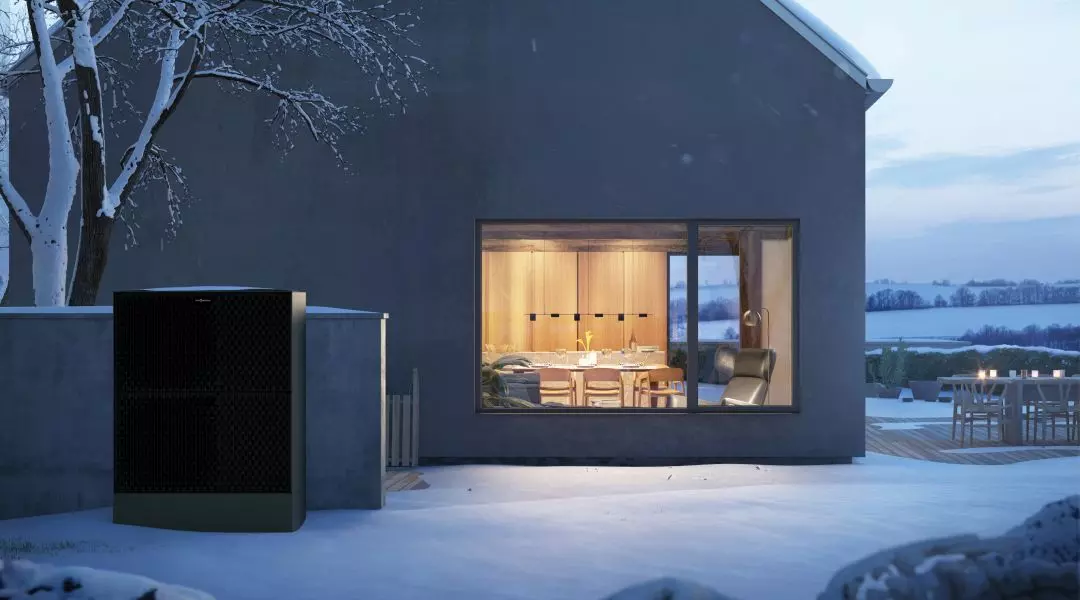Heat pumps are heating devices valued, among other things, for their low operating costs, operating comfort and ecological aspects. What is worth keeping in mind at the stage of their selection, installation and use? The offer of ecological heating devices is growing every year. Newer and improved versions of heat pumps are appearing on the market, which offer us not only high thermal comfort, but also utility. To take full advantage of their advantages, it is important to properly design the installation and select the power of the device. Also a matter of importance for the user is the professional installation of the heat pump by a suitably qualified installer, as well as the formalities to be completed after its purchase and commissioning.
How to avoid mistakes that increase heating costs?
A heat pump system requires careful design - including adjusting its operation to the requirements and needs of the householder. Any understatement at the stage of designing the heating system can make the actual cost of operating the heat pump even twice as high as expected.
The designer and installer are responsible for the proper design and construction of the home heating system. But the future owner of a heat pump can also make several "mistakes" that will make him or her unhappy with such a heating method. These include, but are not limited to: maintaining a higher indoor temperature than expected (e.g., 23°C instead of the designed 21°C), increased hot water consumption (e.g., 300 liters/day instead of the designed 200 liters/day), required higher hot water temperature. (e.g., 55°C instead of the designed 45°C), the use of mixed heating (radiators and underfloor), which requires heating water at 55°C, instead of the underfloor with a supply temperature of 35°C.
Mistakes of not matching design assumptions with actual user requirements can be avoided by designing an installation that takes into account the actual operating conditions of the heat pump. Knowing the exact needs of the occupants, such as the temperature in the heated rooms or the consumption of hot water and its temperature, the designer will select a heat pump with the appropriate power, and in the case of brine/water type devices will also design a ground exchanger of the correct size.
What's new in heat pumps?
New to the air source heat pump market are Viessmann's Vitocal 100-S and 111-Sunits. They are distinguished by the use of a refrigerant with low GWP(Global Warming Potential). It makes the new split units even more environmentally friendly than their predecessors.
The new heat pumps also feature a higher efficiency class A++ and higher SCOP efficiency of up to 5.1, which translates into even lower heating costs.
The Vitocal 100-S and 111-S heat pumps are also equipped with a flow-through electric heating water heater and an "active cooling" function, for comfortable room cooling in the summer.
Who can install a heat pump?
Heat pumps are divided into hermetically and non-hermetically sealed devices. This division implies specific guidelines for, among other things, their installation. A hermetically sealed unit can be installed by a person certified by the manufacturer to install and commission heat pumps. In the case of split units (i.e., consisting of two units), which are non-hermetically sealed heat pumps, commissioning must be carried out by a person with a certificate for personnel, commonly referred to as f-gas authorization. The installation of the split heat pump itself, running the refrigeration piping between the units, but without final connection, can be outsourced to an installer without certification. The installer who connects the heat pump units, however, must be f-gas certified.
Have you bought a heat pump? Find out if you need to register it
One of the obligations of the owner/user of the heat pump is to register it. This consists in setting up a so-called Appliance Card in the Central Register of Operators. The registration obligation applies to both new heat pumps and those that have been in operation for many years and contain a certain amount of refrigerant.
Registration is required for a unit that contains at least 5 tons of CO2 equivalent, for non-hermetically sealed units (split heat pumps), and at least 10 tons of CO2 equivalent, for hermetically sealed units.
Information on whether a heat pump is hermetically sealed or not, as well as the amount of refrigerant in it, can be found in the technical data of the unit and on the nameplate located on the heat pump.
Registration must be completed within 15 days of delivery of the monoblock heat pump and within 15 days of commissioning of the split heat pump. It is worth remembering this, as failure to comply with the related regulations unfortunately entails financial penalties.
For more information, visit the company's VIESSMANN Sp. z o. o. page on the PdD portal.


















